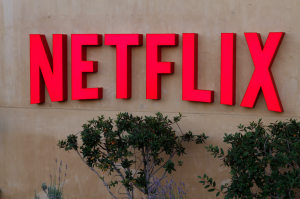Netflix: every which way but lose

As if further signs of the slowdown in subscription video-on-demand growth were needed, Netflix stepped up this week with the news that the global streaming leader only signed up 1.75 million net new paid subs in the first quarter.
That number was well under analysts’ expectations. Netflix has of course shifted the emphasis in its guidance in recent times from counting heads to counting cash. (“Our primary financial metrics are revenue for growth and operating margin for profitability,” reads the sober preamble to its latest quarterly letter to shareholders). But while its current expectation of revenues for the second quarter stands at US$8.2 billion, that is only 3% up year-on-year (less than the 4% growth recorded in Q1) and Netflix expects operating income to be flat and operating margin to decline slightly (albeit mostly because of currency movements).
The dampened expectations for Q2 are in part down to a decision to delay implementation of Netflix’s crackdown on password sharing. The streamer’s letter claimed to be “pleased with the most recent launches of paid sharing” – Netflix’s initiative to convert illicit password sharers to legitimate subscribers – but said that “the latest learnings” from the programme would take time to translate into changes that would “lead to even better results”.
“To implement these changes, we shifted out the timing of the broad launch from late Q1 to Q2. While this means that some of the expected membership growth and revenue benefit will fall in Q3 rather than Q2, we believe this will result in a better outcome for both our members and our business,” Netflix said.
Netflix is understandably wary of going too far, too fast with paid sharing (which enables users to add extra members to their account or take up a new subscription) and wants to ensure that it doesn’t alienate its existing base. The streamer’s leadership also know that there are likely to be short-term negative results as some members drop out.
The Q2 launches of paid sharing – which co-CEO Greg Peters described as “very broad” encompassing “many, many other countries” alongside the US – will be done in a way that reflects regional sensitivities around pricing. Netflix is open to a range of strategies on differential pricing more generally, having slashed the cost of the service in emerging markets while upping the rates in advanced western ones.
Ad tier advance
If the rewards of paid sharing are to some extent deferred, Netflix does seem happy enough with the outcome so far of its launch of an advertising tier – at least insofar as its impact on the subscriber base is concerned.
“Engagement on our ads tier is above our initial expectations and, as expected, we’ve seen very little switching from our standard and premium plans,” the company said. An important contributor to this is Netflix’s efforts to ensure that the same content is available on the ad tier as on the standard service – not straightforward given the complexity of licensing deals globally.
Netflix also said that the ad tier was delivering more revenue per head than the standard plan in the US, indicating that it can make up the shortfall in subscription revenue by topping it up with ad sales revenue. Whether that US success can be translated internationally remains to be seen. In any case, Netflix is happy enough with the progress to date to announce that it is upping the quality of the ad tier, with a move from 720p to 1080p resolution and enabling two concurrent streams in all 12 markets where the ad tier has launched. That indicates a degree of confidence that a lower-priced ad tier will either not cannibalise the wider base or, if it does, it won’t matter much because the amount of ad money rolling in will offset any negative impact.
The rollout of the ad tier will nevertheless, according to Peters, be “a gradual build” as Netflix weighs up different options to tinker with the moving parts – tinkering that could have an impact both on the reaction of subscribers and on whether advertisers take the plunge. The possibility of multiple ad tiers in the future remains open.
In an investment call that did not, for the first time, feature the larger-than-life presence of Reed Hastings, co-CEOs Peters and Ted Sarandos did their level best to narrate a coherent growth story that rests on multiple contingencies.
Can the ad tier deliver the scale needed to succeed on a financial level, avoid cannibalising Netflix’s existing user base and justify the additional content spend necessary to bring it up to scratch with the standard offering? Can paid sharing bring in additional customers at a price point that makes sense? Can Netflix deliver a sustainable business in a market such as India, where it needs to attract subscribers by cutting prices while maintaining or increasing its spend on content?
For Netflix the world is no longer the scene of a mad gold rush to win eyeballs by any means necessary. Nor is it a wasteland where the paid-for streaming bubble has burst. The company’s great strength is its recognition of the complexity of the world, its willingness to experiment with solutions that might deliver results, and its willingness to change tack if something is not quite right.



